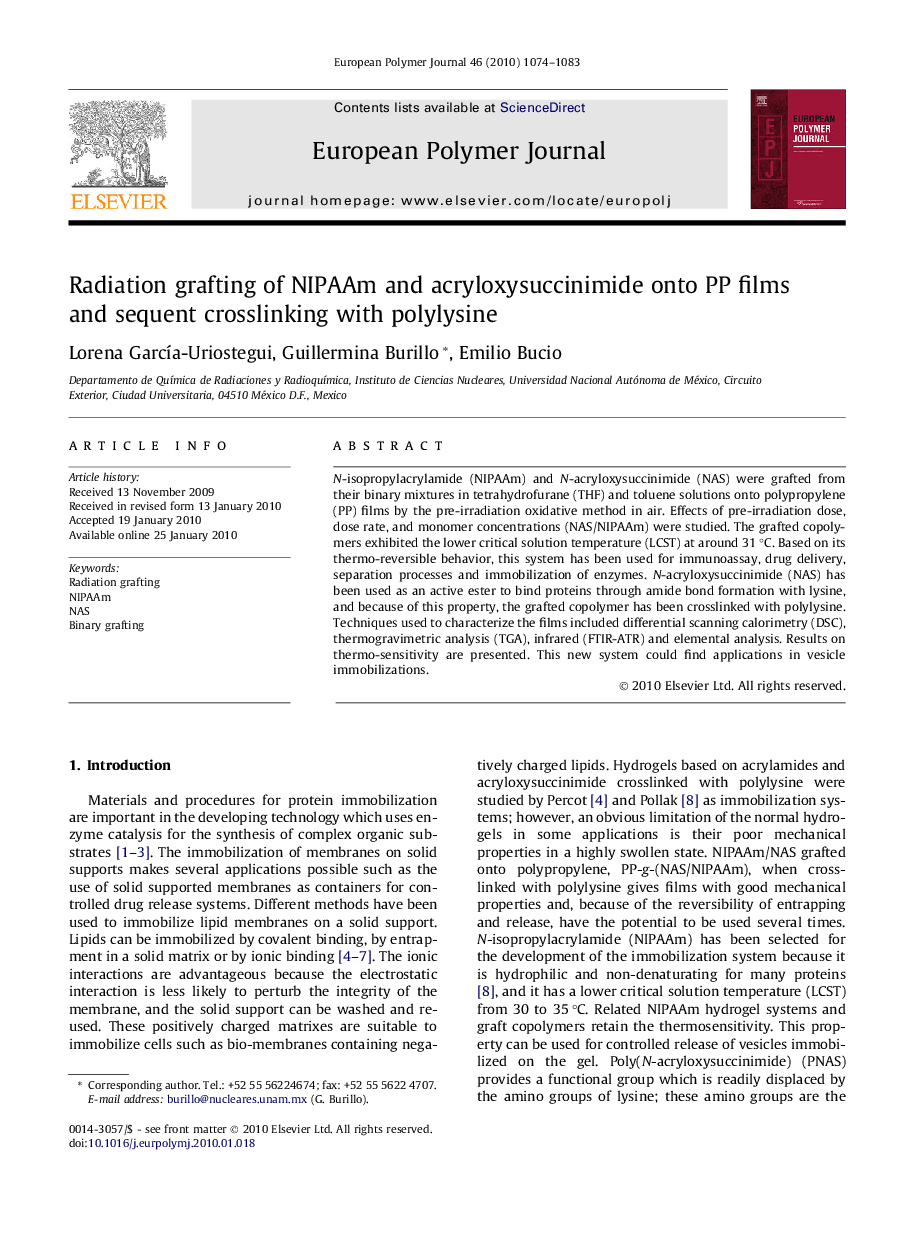| Article ID | Journal | Published Year | Pages | File Type |
|---|---|---|---|---|
| 1396097 | European Polymer Journal | 2010 | 10 Pages |
N-isopropylacrylamide (NIPAAm) and N-acryloxysuccinimide (NAS) were grafted from their binary mixtures in tetrahydrofurane (THF) and toluene solutions onto polypropylene (PP) films by the pre-irradiation oxidative method in air. Effects of pre-irradiation dose, dose rate, and monomer concentrations (NAS/NIPAAm) were studied. The grafted copolymers exhibited the lower critical solution temperature (LCST) at around 31 °C. Based on its thermo-reversible behavior, this system has been used for immunoassay, drug delivery, separation processes and immobilization of enzymes. N-acryloxysuccinimide (NAS) has been used as an active ester to bind proteins through amide bond formation with lysine, and because of this property, the grafted copolymer has been crosslinked with polylysine. Techniques used to characterize the films included differential scanning calorimetry (DSC), thermogravimetric analysis (TGA), infrared (FTIR-ATR) and elemental analysis. Results on thermo-sensitivity are presented. This new system could find applications in vesicle immobilizations.
Graphical abstractFigure optionsDownload full-size imageDownload as PowerPoint slide
